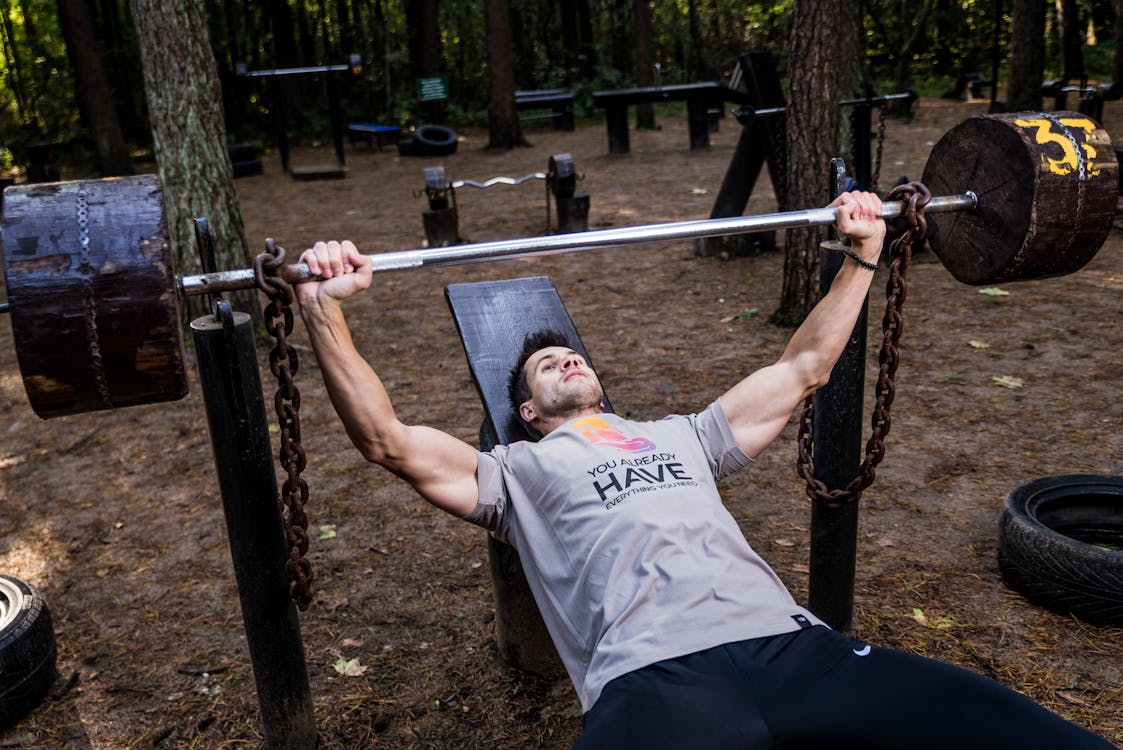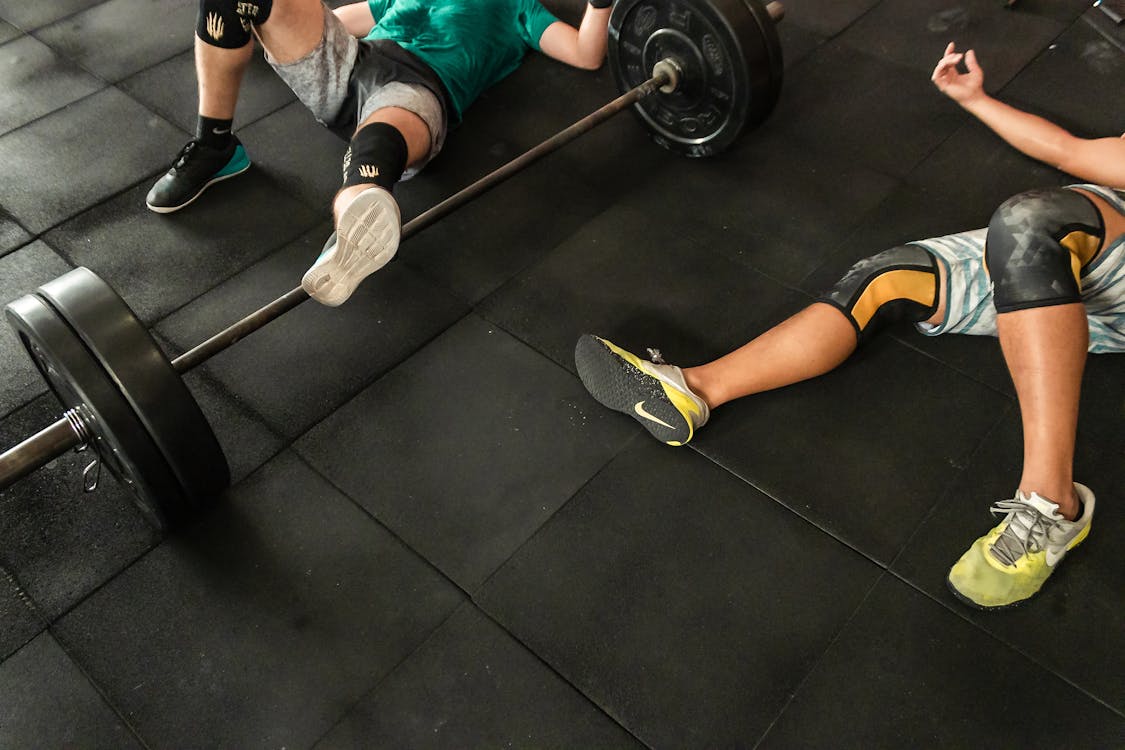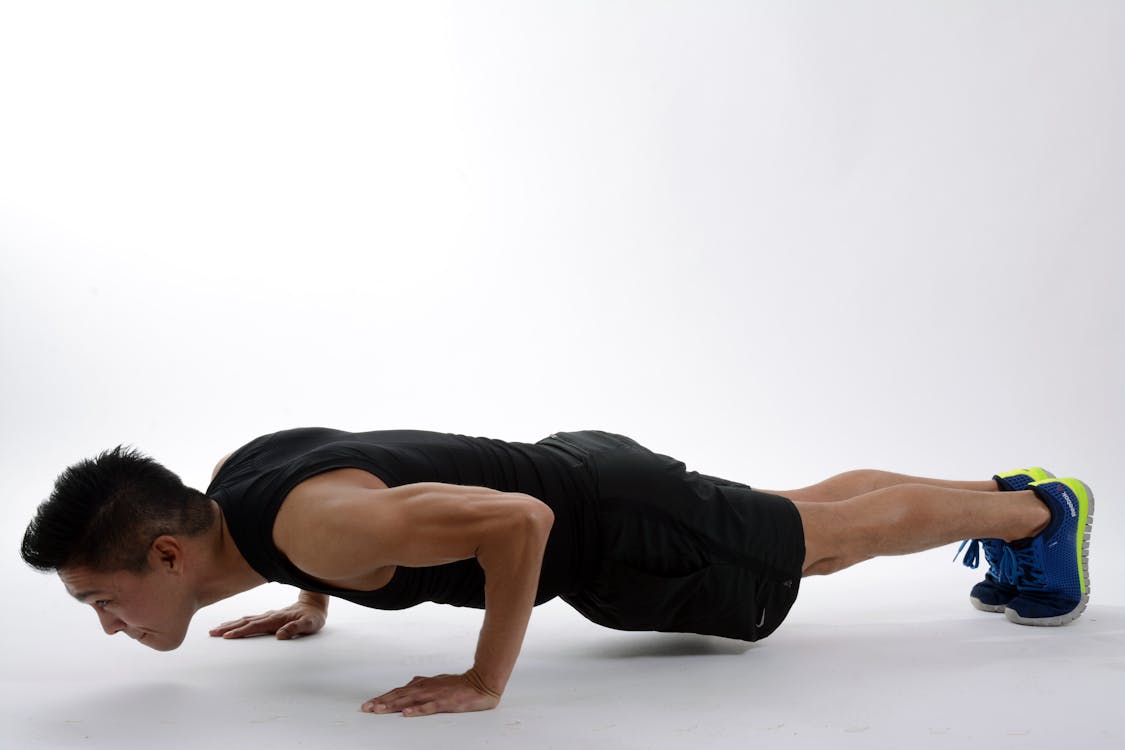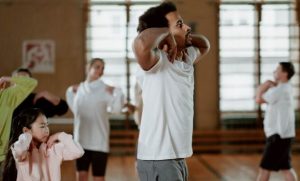
Exercise is essential for maintaining a healthy body and mind. However, without proper precautions, exercise-related injuries can occur, resulting in pain and a setback in progress. In this article, we will discuss the best tips and techniques for preventing exercise-related injuries and ensuring safe and effective workouts.
1- Warm-Up and Cool-Down

Engaging in regular exercise is an essential part of maintaining a healthy lifestyle, but it’s equally important to approach physical activity with care and preparation. Warm-up and cool-down routines are two crucial components that often get overlooked but play a vital role in injury prevention and optimizing exercise performance.
The Importance of Warm-Up:
Before diving into a workout, taking the time to warm up is essential. A proper warm-up gradually increases your heart rate, body temperature, and blood flow to the muscles, preparing them for the upcoming physical activity. It helps mentally and physically transition your body from a state of rest to readiness, reducing the risk of injury and enhancing exercise performance.
During a warm-up, low-intensity exercises that target the muscle groups you’ll be engaging in during your workout are recommended. This process helps activate those muscles, increase joint flexibility, and lubricate the joints, all of which are critical for injury prevention. A well-designed warm-up allows you to ease into your exercise routine, giving your body the opportunity to adapt gradually to the increasing demands, reducing the likelihood of strains or sprains.
The Role of Cool-Down:
Just as a warm-up is essential before exercise, a proper cool-down is equally vital post-workout. The cool-down phase allows your body to gradually return to its resting state, which is especially important for cardiovascular health. It involves engaging in low-intensity exercises like walking or stretching for 5-10 minutes after your main workout.
Cooling down helps prevent the pooling of blood in the legs and facilitates the removal of metabolic waste products from the muscles. By engaging in light aerobic activity during the cool-down, you aid in the recovery process, reducing the chances of delayed-onset muscle soreness (DOMS) and preventing post-workout stiffness. Moreover, incorporating static stretches during the cool-down improves flexibility, leading to better joint health and overall mobility.
Exercise Injuries and How Warm-Up and Cool-Down Help:
Exercise injuries can occur due to various factors, such as overuse, improper form, inadequate warm-up, and sudden high-intensity movements. Common exercise injuries include sprains, strains, tendinitis, and muscle tears. These injuries can result in pain, limited mobility, and setbacks in your fitness journey.
A lack of warm-up can significantly contribute to exercise-related injuries. When muscles are cold and stiff, they are more prone to damage during intense physical activity. Without a proper warm-up, the abrupt increase in intensity during a workout can cause strains and tears in the muscle fibers.
On the other hand, cooling down after exercise aids in the recovery process by gradually reducing heart rate and blood flow. This gradual decline prevents sudden changes in blood pressure, reducing the risk of dizziness and potential cardiovascular issues. Additionally, stretching during the cool-down phase helps to lengthen and relax the muscles, reducing tension and minimizing the risk of post-workout stiffness.
Implementing Warm-Up and Cool-Down into Your Routine:
Incorporating warm-up and cool-down routines into your exercise regimen is relatively simple and highly beneficial. Dedicate at least 10-15 minutes before and after your workout to these essential components. Remember the following tips:
- Warm-Up: Start with light cardiovascular exercises like brisk walking, jogging in place, or gentle cycling. Gradually move on to dynamic stretches, targeting the muscles you’ll be using during your workout.
- Cool-Down: After your workout, perform low-intensity activities such as walking or slow cycling for 5-10 minutes. Follow up with static stretches for all major muscle groups, holding each stretch for about 15-30 seconds.
By consistently incorporating warm-up and cool-down routines, you’ll not only reduce the risk of exercise-related injuries but also improve your exercise performance, recovery, and overall enjoyment of physical activity. So, before you hit the gym or start your next workout session, take the time to prepare your body with a proper warm-up and conclude with a thoughtful cool-down—it’s a small investment in your well-being with substantial long-term benefits.
2- Cooling-Down

The Importance of Cooling Down After Exercise
Cooling down after exercise is a crucial yet often overlooked component of a well-rounded workout routine. While the main focus is often on the intensity and duration of the exercise itself, dedicating time to cool down afterward can significantly impact your overall fitness journey. Proper cool-downs aid in promoting recovery, preventing injuries, and improving flexibility, making it an essential part of any exercise regimen.
Gradual Recovery and Heart Rate Reduction
One of the primary purposes of a cool-down is to facilitate a gradual recovery process. After intense physical activity, your heart rate and breathing are elevated, and your body temperature is higher than usual. Engaging in a few minutes of low-intensity aerobic activity during the cool-down, such as walking or light jogging, allows your heart rate to gradually decrease. This gradual reduction in heart rate helps prevent sudden drops in blood pressure, which can lead to dizziness or lightheadedness.
Preventing Delayed-Onset Muscle Soreness (DOMS)
Delayed-Onset Muscle Soreness (DOMS) is a common experience after challenging workouts, especially if you’re new to a particular exercise or have increased the intensity of your routine. DOMS usually occurs within 24 to 48 hours after exercise and can lead to muscle discomfort and stiffness. By engaging in light aerobic activity during the cool-down, you promote blood flow to your muscles, which helps remove metabolic waste products and reduces the severity of DOMS.
Enhancing Flexibility and Range of Motion
The post-exercise period is an ideal time to work on flexibility through static stretching. Static stretches involve holding a muscle in a lengthened position for a certain duration. When your muscles are warm after exercise, they are more pliable, making it easier to improve your flexibility. Regular stretching during the cool-down can lead to better joint health, improved posture, and enhanced range of motion, all of which contribute to better overall mobility.
Mental Relaxation and Transition
After an intense workout, your body may be physically fatigued, and your mind could be still in an active state. Cooling down provides a transitional phase between the heightened activity of the workout and the calmness of rest. Taking a few minutes to breathe deeply, meditate, or perform gentle stretches can help you relax mentally, reduce stress, and improve your mood. This mental relaxation can carry over into your post-workout activities, leading to a more positive outlook and a sense of accomplishment.
Reducing the Risk of Injuries
Engaging in a cool-down routine is one of the most effective ways to reduce the risk of exercise-related injuries. By gradually decreasing the intensity of your workout and engaging in appropriate stretches, you allow your body to recover and repair effectively. This not only reduces the likelihood of immediate injuries, such as strains and sprains but also prevents overuse injuries that can occur when muscles are fatigued and not given sufficient time to recover.
3- Proper Technique and Form

Proper technique and form are fundamental pillars of any successful exercise routine. Whether you’re lifting weights, performing bodyweight exercises, or engaging in sports activities, maintaining correct form is crucial for maximizing the benefits of your workouts and minimizing the risk of injuries. When exercises are executed with proper technique, they target the intended muscle groups efficiently, leading to better results and overall progress.
Protecting Joints and Muscles
One of the primary reasons for focusing on proper technique is to protect your joints and muscles from unnecessary stress and strain. Using incorrect forms can lead to overloading certain areas of the body, increasing the risk of acute injuries such as sprains and strains or chronic issues like tendonitis. By maintaining proper alignment and posture during exercises, you distribute the workload evenly among the muscles involved, reducing the likelihood of overuse injuries.
Maximizing Muscle Engagement
Using proper technique ensures that the targeted muscles are effectively engaged throughout the movement. This engagement leads to greater muscle activation and development. For example, when performing a squat with the correct form, you activate your glutes, hamstrings, quads, and core. However, using improper techniques, such as leaning too far forward, may shift the focus away from the targeted muscles, leading to reduced effectiveness of the exercise.
Improving Performance
Proper technique and form are essential for enhancing exercise performance. When you execute exercises with precision, you generate more power and efficiency, allowing you to lift heavier weights, perform more repetitions, and achieve better results. Focusing on the form also enables you to maintain balance and stability during complex movements, leading to improved overall athletic performance and coordination.
Preventing Overcompensation
When your body compensates for weak or inactive muscles by relying on stronger muscle groups, it can lead to muscular imbalances. These imbalances may not only hinder your progress but also increase the risk of injuries. Proper technique ensures that all the muscles involved in an exercise contribute their fair share of effort, promoting balanced muscle development and reducing the likelihood of overcompensation.
Seeking Professional Guidance
For beginners and even experienced fitness enthusiasts, seeking professional guidance can be invaluable. Working with a certified personal trainer or coach provides personalized attention to ensure you understand and execute exercises correctly. They can offer feedback, corrections, and modifications tailored to your individual needs, helping you achieve optimal results while minimizing the risk of injuries.
4- Gradual Progression and Rest Days

Gradual progression is a fundamental principle in fitness that involves slowly and steadily increasing the intensity, duration, or complexity of your workouts over time. Whether you’re a beginner starting a new exercise routine or an experienced athlete aiming to achieve new fitness goals, gradual progression is essential for continued improvement and avoiding overtraining. By allowing your body to adapt gradually to increased demands, you reduce the risk of injuries and burnout while maximizing your fitness gains.
Benefits of Gradual Progression
One of the key benefits of gradual progression is that it minimizes the risk of overuse injuries. Pushing yourself too hard too soon can strain your muscles, tendons, and ligaments, leading to painful injuries that may set back your progress significantly. By incrementally increasing the intensity or volume of your workouts, you give your body time to adapt and become stronger without subjecting it to excessive stress.
Additionally, gradual progression allows for consistent improvement in your fitness level. When you challenge yourself appropriately and give your body sufficient time to recover, you’ll notice steady progress in your strength, endurance, and overall performance. This steady improvement also fosters a positive mindset, as you experience tangible results and feel motivated to keep pushing forward.
Incorporating Rest Days for Optimal Recovery
In conjunction with gradual progression, rest days play a crucial role in the effectiveness of your fitness routine. Rest days are essential for giving your muscles time to repair and recover from the stress of exercise. During workouts, microscopic tears occur in the muscle fibers, and rest days provide the opportunity for these tears to heal and the muscles to grow stronger.
Rest days are not just about physical recovery; they also promote mental rejuvenation. Taking a break from intense workouts allows you to recharge mentally, reduce stress, and prevent burnout. A well-planned rest day can leave you feeling refreshed and eager to return to your workouts with renewed energy.
Implementing Gradual Progression and Rest Days into Your Routine
To incorporate gradual progression and rest days effectively, consider the following tips:
- Start Slowly: If you’re new to exercise or trying a new activity, begin with a manageable level of intensity or duration. Gradually increase the difficulty as you become more comfortable and confident.
- Listen to Your Body: Pay attention to how your body responds to your workouts. If you feel excessively fatigued or experience persistent soreness, it may be a sign that you need more rest or should dial back the intensity.
- Plan Your Progression: Set specific and achievable goals for your fitness journey. Create a structured plan that outlines how you will gradually increase the intensity or duration of your workouts over weeks or months.
- Balance Different Types of Exercises: Avoid overtraining specific muscle groups by incorporating cross-training and variety into your routine. This helps ensure balanced muscle development and reduces the risk of overuse injuries.
5- Listen to Your Body

The Importance of Listening to Your Body in Fitness
Listening to your body is a fundamental aspect of maintaining a healthy and balanced approach to fitness. Your body is incredibly intuitive and has a unique way of communicating its needs and limitations. Whether you’re engaging in intense workouts, trying new exercises, or following a fitness program, tuning in to your body’s signals is essential for preventing injuries, avoiding burnout, and optimizing your overall fitness journey.
Understanding Your Body’s Signals
Each person’s body is different, and understanding your body’s signals is crucial for making informed decisions during your fitness routine. Pay attention to how your body responds to exercise, including how you feel during and after workouts. Recognize the difference between muscle fatigue and pain, and learn when to push through challenges and when to give your body time to recover.
Recognizing Fatigue and Overtraining
Listening to your body can help you identify signs of fatigue and prevent overtraining. Pushing yourself too hard without adequate rest can lead to physical and mental exhaustion, which may negatively impact your performance and overall well-being. Signs of overtraining include persistent soreness, decreased performance, irritability, and disturbed sleep patterns. When you notice these signs, it’s essential to take a step back, reevaluate your training plan, and incorporate rest and recovery days.
Customizing Your Fitness Routine
One of the significant benefits of listening to your body is the ability to customize your fitness routine according to your individual needs and goals. You can adjust the intensity, duration, and type of exercise to suit your body’s capabilities and preferences. By being attuned to your body’s responses, you can make modifications to avoid injury, improve your workout experience, and achieve better results.
Building a Sustainable Fitness Journey
Ultimately, listening to your body contributes to creating a sustainable fitness journey that you can maintain in the long run. A balanced approach to exercise, where you challenge yourself appropriately and allow for proper recovery, helps prevent burnout and fosters a positive relationship with fitness. By respecting your body’s limits and nurturing it with care, you can enjoy the physical, mental, and emotional benefits of regular exercise for years to come.
Conclusion
In conclusion, preventing exercise-related injuries is essential for achieving fitness goals and maintaining a healthy lifestyle. To ensure safe and effective workouts, it’s crucial to warm up and cool down properly, maintain proper technique and form, progress gradually, take rest days, and listen to your body.
Proper warm-up and cool-down routines prepare your body for physical activity and facilitate a smooth transition to a resting state. This helps increase blood flow, and flexibility, and reduces the risk of injuries. Additionally, paying attention to proper technique and form during exercises protects your joints and muscles from strain and enhances workout effectiveness.
Gradual progression and incorporating rest days allow your body to adapt and recover effectively. Slowly increasing workout intensity and duration promotes continuous improvement without overwhelming your body, while regular rest days are essential for healing muscles and preventing burnout. By respecting your body’s limits and being attuned to its signals, you can optimize your fitness journey while prioritizing your well-being. Stay safe and happy exercising!




